Phase I: Creating a Conceptual Roadmap (2015-2017)
In Phase I, the Partners set out to confirm that it is theoretically possible to verify the physical dismantlement of a nuclear warhead in a multilateral environment without compromising safety, security, and proliferation-sensitive or other sensitive information.
By focusing initially on nuclear warhead dismantlement, the Partners deepened their understanding of the challenges and potential solutions associated with this process. They developed a comprehensive 14-Step Model of the dismantlement process, which begins with removing a nuclear weapon from its delivery system and ends with verifying the disposition of its components, and an initial toolkit of monitoring and inspection options. Based on this initial work, the Partners concluded that such multilateral verification should be possible.
Phase II: From Paper to Practice (2018-2019)
In Phase II, the Partners refined and tested the toolkit of monitoring and inspection options developed in Phase I through tabletop and in-person exercises and realistic technical demonstrations. Through this work, the Partners confirmed that nuclear disarmament verification requires tailoring different monitoring and inspection options to achieve specific verification objectives throughout the nuclear warhead dismantlement process. They also extended their understanding of measures for verifying nuclear disarmament and confirmed their basic conclusion from Phase I.
Phase III: Addressing Complexities and Building Confidence (2020-2025)
The Partners’ focus for Phase III is strengthening their understanding of possible monitoring and inspection options and technologies for future nuclear disarmament by conducting more complex exercises, demonstration, and analysis of key verification concepts, and investigating the specifics of monitoring and inspecting options in a multi-warhead, multi-site, multi-year disarmament scenario.
During the first three years of Phase III, the Partners held tabletop exercises that evaluated the monitoring and inspection options and technologies from the perspective of a theoretical inspection entity and inspected country. The exercise results validated their prior work and reveled issues that merit further exploration related to monitoring and inspection in the multi-warhead, multi-site, multi-year disarmament scenario.
As a result, the Partners revised the working group structure to address verification options under two scenarios: where an agreement limits countries’ arsenals to a maximum of 500 nuclear weapons and where an agreement requires countries to reduce their arsenals from 500 nuclear weapons to zero. The Partners also established a group to manage cross-cutting issues applicable to both scenarios. A technology-focused working group operates as well, integrating technology into the other working groups. This approach has improved the Partnership’s understanding of how to build confidence in the verification of nuclear disarmament, leverage verification technologies, and address the unique challenges associated with verifying the absence of undeclared activities that would violate a country’s disarmament obligations.



